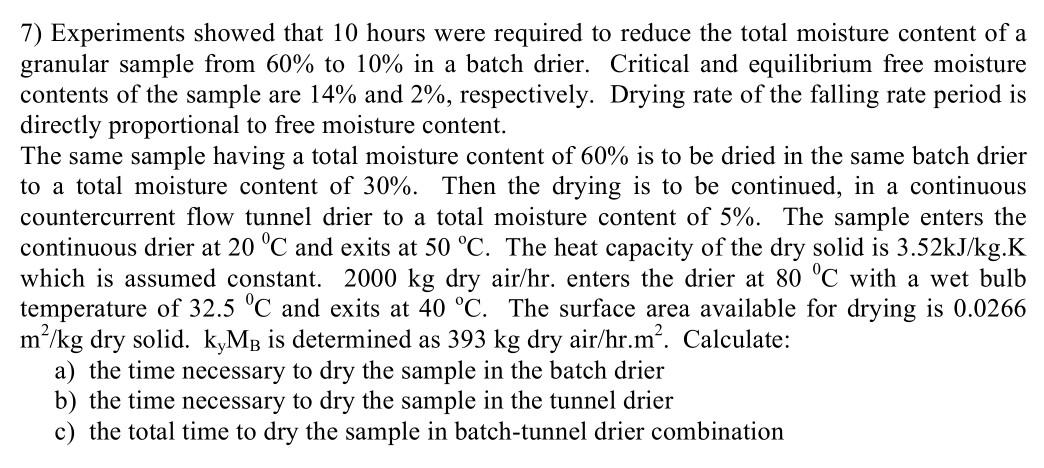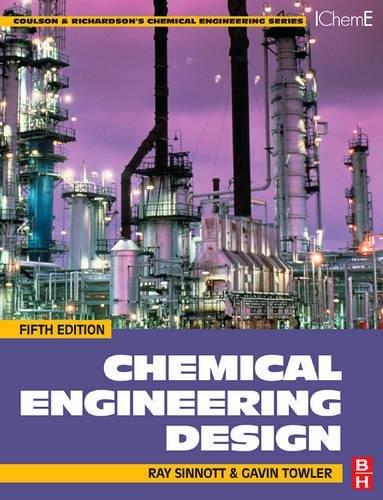Answered step by step
Verified Expert Solution
Question
1 Approved Answer
7) Experiments showed that 10 hours were required to reduce the total moisture content of a granular sample from 60% to 10% in a batch

7) Experiments showed that 10 hours were required to reduce the total moisture content of a granular sample from 60% to 10% in a batch drier. Critical and equilibrium free moisture contents of the sample are 14% and 2%, respectively. Drying rate of the falling rate period is directly proportional to free moisture content. The same sample having a total moisture content of 60% is to be dried in the same batch drier to a total moisture content of 30%. Then the drying is to be continued, in a continuous countercurrent flow tunnel drier to a total moisture content of 5%. The sample enters the continuous drier at 20C and exits at 50C. The heat capacity of the dry solid is 3.52kJ/kg.K which is assumed constant. 2000kg dry air/hr. enters the drier at 80C with a wet bulb temperature of 32.50C and exits at 40C. The surface area available for drying is 0.0266 m2/kg dry solid. kyMB is determined as 393kg dry air /hr2m2. Calculate: a) the time necessary to dry the sample in the batch drier b) the time necessary to dry the sample in the tunnel drier c) the total time to dry the sample in batch-tunnel drier combination 7) Experiments showed that 10 hours were required to reduce the total moisture content of a granular sample from 60% to 10% in a batch drier. Critical and equilibrium free moisture contents of the sample are 14% and 2%, respectively. Drying rate of the falling rate period is directly proportional to free moisture content. The same sample having a total moisture content of 60% is to be dried in the same batch drier to a total moisture content of 30%. Then the drying is to be continued, in a continuous countercurrent flow tunnel drier to a total moisture content of 5%. The sample enters the continuous drier at 20C and exits at 50C. The heat capacity of the dry solid is 3.52kJ/kg.K which is assumed constant. 2000kg dry air/hr. enters the drier at 80C with a wet bulb temperature of 32.50C and exits at 40C. The surface area available for drying is 0.0266 m2/kg dry solid. kyMB is determined as 393kg dry air /hr2m2. Calculate: a) the time necessary to dry the sample in the batch drier b) the time necessary to dry the sample in the tunnel drier c) the total time to dry the sample in batch-tunnel drier combination
Step by Step Solution
There are 3 Steps involved in it
Step: 1

Get Instant Access to Expert-Tailored Solutions
See step-by-step solutions with expert insights and AI powered tools for academic success
Step: 2

Step: 3

Ace Your Homework with AI
Get the answers you need in no time with our AI-driven, step-by-step assistance
Get Started


